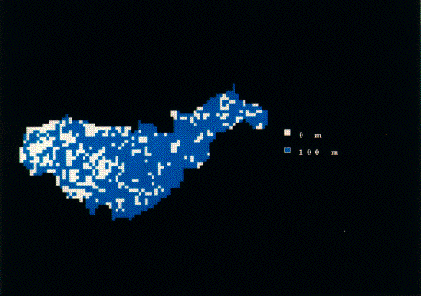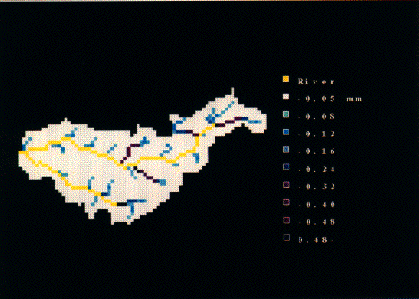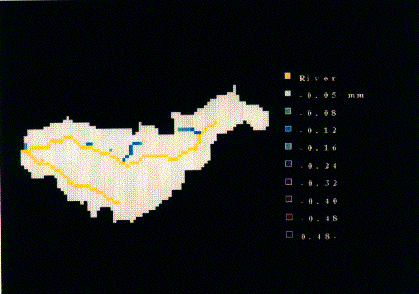
iblue area:setting pointj
 |
Fig.1:Application Catchment(1 by 100mj iblue area:setting pointj |
 |
Fig.2:Surface runoff map (Before setting facilities.)
(blue:high level water,yellow:riverj |
 |
Fig.3:Surface runoff map (After setting facilities)
iblue:high level water,yellow:riverj |
| SHINYA Tanimoto 1995 FHydrological Modelling for Basin Management & Planning using GIS, Master thesis |
| Yang, D. 1998 FDistributed Hydrologic Model using hillslope discretizetion based on catchment area function: Development and Applications, PhD Thesis |
| HABIB Mughal, 2000 : Process based soil erosion modelling at catchment scale, Ph.D. Thesis |